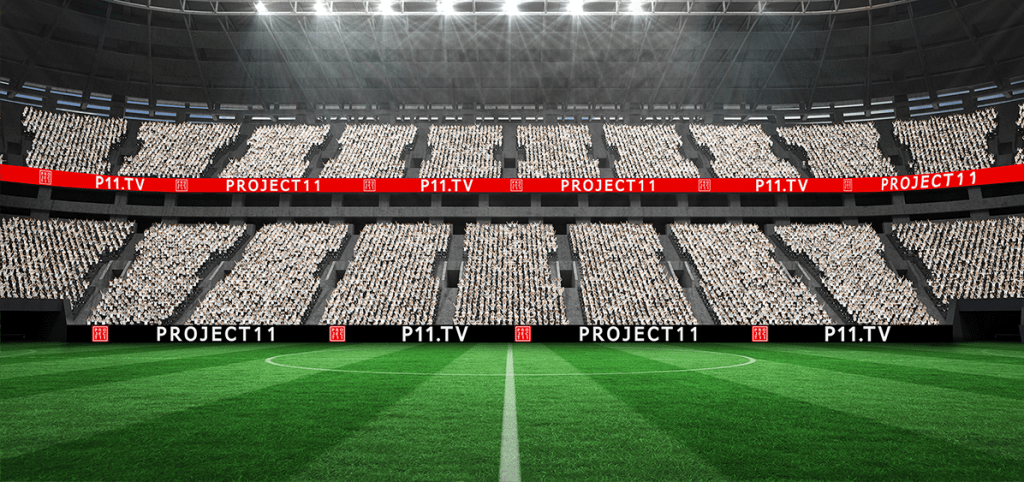History of Perimeter Advertising
The first sign of commercialisation in football appeared in the early 1900s, when popular domestic brands started to promote themselves at major stadiums in England.
Brand logos would be positioned on the main stands, rather than the perimeter of the pitch as you see today. By 1930, it was common to see brand advertisement on the team shirts and around the stadium.
This changed in the sixties when media coverage of football was on the rise. Televisions were becoming more common in households and footage from football matches was filling the airtime. As the popularity of football grew, companies wanted to further increase their involvement through sponsorship and advertising strategies. This meant that more teams were developing additional opportunities to display brands, including static perimeter advertising boards.
Historically, stadium perimeter boards were basic signs with static graphics, limiting each display board to one advertiser. These were normally sold to brands in per season packages, restricting the flexibility of the campaign. However, LED perimeter systems opened a realm of advertising opportunities. They offer a sophisticated edge as brands can produce impressive and eye-catching messages, and are now an accepted medium for companies to effectively market their brand.
Real Madrid was the first team in La Liga to pioneer with LED perimeter advertising. The Spanish giants installed the digital perimeter boards at the beginning of the 1994/95 season, with several La Liga teams following suit over the next few seasons. However, English football was slow with adopting the new technology and didn’t have LED boards until 2006 when West Ham United first installed them.
Stoke City took LED Perimeter advertising to the next level. They were the first club in the league to feature two rows of perimeter boards around the pitch, doubling the advertising opportunities. In recent years, new technology has given more power and flexibility to clubs and brands that use it. Spanish top division La Liga currently use Digital Billboard Replacement, or DBR, which produces multiple feeds to be generated from the perimeter advertising at one match.
Rapidly advancing technology means the future of perimeter advertising is exciting and fascinating. Fans are consuming sport differently. There’s an impetus on creating content which offers a better fan experience, with teams equipping their stadiums with technology that brings fans closer to the game. Stadiums are already being built with the future in mind. For instance, FC Kransnodar recently unveiled their new hi-tech stadium with the world’s first 360-degree panoramic screen.
The introduction of augmented and virtual reality could see advertisers create more in-depth, targeted messages based on the individual fans’ taste and preferences, similar to the big data technology used by Facebook, Google, and YouTube. A more immediate development is the potential for advertisers to generate real-time and relevant LED perimeter messages during the game, enabling increased engagement with fans and further enhancing the campaign. Additionally, with many fans now watching sport on a mobile device, there is a heightened possibility of LED perimeter boards becoming clickable and interactive on digital devices.
It’s clear to see how much marketing in football has developed in the past 40 years, with technological advances making perimeter advertising a common marketing strategy for brands. It will be interesting to see what the next 40 years hold and what the next phase of perimeter advertising will contain.
If you would like to get involved in this exciting phase of perimeter advertising at the world’s top sporting events, then get in touch. Project11 are best known for our rights in English and Spanish football, and deliver a platform of innovative perimeter LED advertising and exciting sponsorship and partner opportunities.


